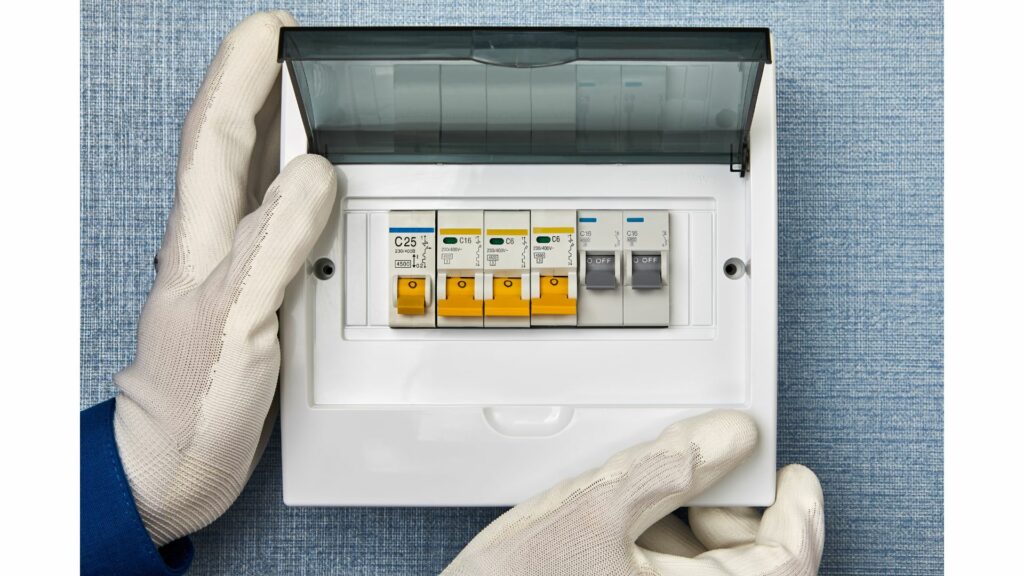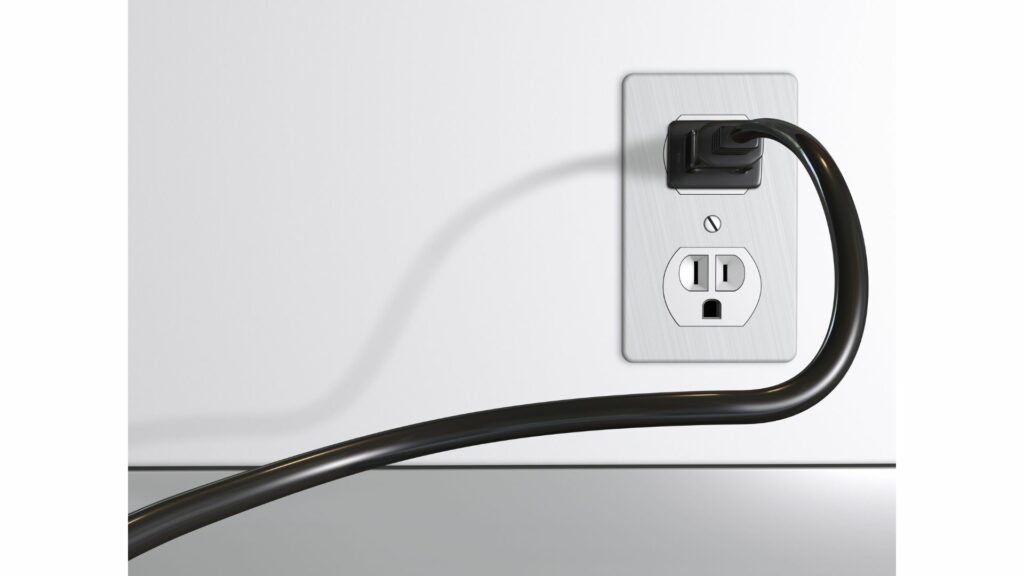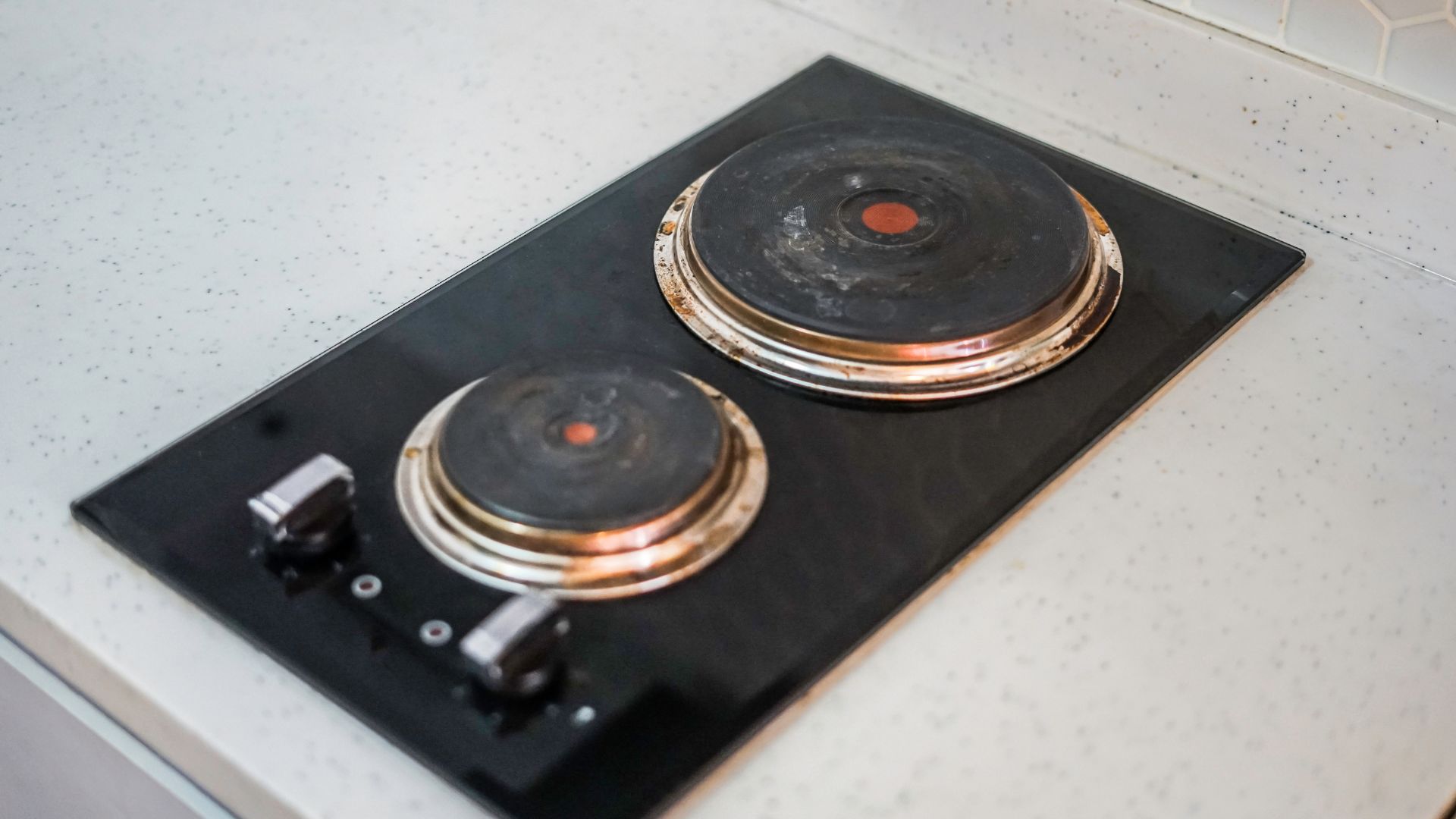Have you selected a breaker size for your electric stove? If you haven’t yet, use the guide below to make your decision.
What Size Breaker Does A Electric Stove Need?
| Electric Stove Amps | Breaker Size |
| 10A | 15A |
| 20A | 25A |
| 30A | 40A |
| 40A | 50A |
| 50A | 60A |
You need a 50A double-pole breaker. The average 240V electric stove can run on a 50A circuit. The electrical demands for an industrial model will necessitate a 60A breaker.
Aim for 30 to 60A breakers. That means using 10 – 6-gauge wiring. Naturally, the stove’s amperage will influence your rating. Common sense will compel you to match the breaker size to the stove’s rating.
However, you can get away with using a larger stove on a smaller circuit breaker. This is because a stove’s heating elements do not run continuously. Instead, they cycle on and off to maintain the correct temperature.
As such, their electrical draw is unlikely to exceed the breaker’s capacity. And even if it does, it won’t do so for long. But you shouldn’t use that as an excuse to undersize the breaker. Undersized breakers won’t pass inspection. Oversized breakers are equally frowned upon.
Can I Use A 30 Amp Breaker For A Stove?
Yes, you can use a 30A breaker for a stove. However, you typically find 30A ratings in older models. If you buy a new stove, a contractor may encourage you to upgrade the breaker. A 30A breaker is safest when you have a dedicated circuit.
Can I Use A 40 Amp Breaker For A Stove?
40A is a decent starting point. Most stoves use 30 to 60 amps. But 30A usually applies to older stoves. 40A can run an electric stove, but only if the appliance’s rating is 40A or less.
Can I Use A 50 Amp Breaker For A Stove?
The average electric stove uses 50 amps. Therefore, a 50A breaker is appropriate. If the stove uses more than 50 amps, upgrade the breaker.
Can I Use A 60 Amp Breaker For A Stove?
Yes, you can if you have an industrial model. For the average stove, 30 to 50A breakers are sufficient.
How To Determine The Right Size Breaker For Electric Stove?

You can’t afford to get the electric stove’s breaker size wrong. A gas stove can survive on a 15A circuit because it runs at 1.5amps. These devices use the current to run low-duty accessories such as the timer and light.
Electric stoves are a different matter. They use 30 to 60 amps, which is enough to electrocute a person to death. Therefore, you must proceed carefully:
The Easiest Way To Determine The Breaker Size Is To Check The Manual.
The stove’s manufacturer will most likely recommend a suitable breaker size. If they haven’t, reach out to the manufacturer. They will tell you the correct breaker size for your particular stove.
You Can Also Consult A Local Technician
If they wired your home, they could recommend a suitable stove whose rating matches your circuit. If you already bought the stove, they will identify the appropriate breaker size after considering your needs. If you want to run the stove on a shared circuit, they will advise you accordingly.
Visit Online Communities
Consumer forums will connect you to homeowners that have your stove. Those homeowners will tell you the breaker sizes they used and the consequences they encountered as a result.
Contractor/technician forums are even more helpful because they allow experienced electricians to provide free advice to struggling laypeople. Don’t take all the information you collect from these online platforms at face value.
Consult multiple sources before you take action. Make sure the recommendations you’ve received from the different sources are consistent.
The manufacturer is the best option because they made the stove. If you prefer to determine the breaker size yourself, follow these steps:
1). Find The Stove’s Amperage.
The manufacturer prints this information on a label attached to the appliance. You can also check the manual. You can change the rating into any unit you want using this formula: watts = amps x volts.
Amps are the most important because the breaker size is measured in amps. You can’t compare the stove’s rating to the breaker size unless their units are the same. If you have an older stove and the label faded, talk to the manufacturer. If you send them the serial number or a picture of the stove, they will identify its rating.
2). You Should Place The Electric Stove On A Dedicated Circuit.

This is the only way to prevent overloading and incessant tripping. But if you want the stove to share a circuit, get the total amperage of the other appliances on the circuit.
If they use wattage instead of amps, get the total wattage before using the formula above (watts = amps x volts) to turn the watts into amps. This conversion will only work if you know the voltage. Like the stove, most appliances have a label that reveals the wattage and voltage. Add the total amps of the devices to the stove’s amperage. This is the load your breaker must accommodate.
3). Compare The Total Load To Your Breaker Size.
Open your electrical panel and find the breaker that runs the stove. These devices are labeled. According to Wikihow, the amps are on the breaker’s handle.
If the electric stove has a dedicated circuit, make sure the breaker’s amps are higher than the stove’s amps. If you have a shared circuit, the breaker’s amps should exceed the total load. If you haven’t selected the breaker yet, look for a breaker with more amps than the stove’s rating.
4). Make Sure The Wiring Matches The Breaker Size
Are you planning to wire the circuit yourself? Make sure the wiring matches the breaker size. The breaker protects the wires from overheating, but only if you select the correct gauge. I have to warn you against forcing a wire to transmit more power than it can handle. The jacket can dissolve because of the excess heat. This will lead to a fire.
An example of a breaker/wire mismatch is a 12-gauge line on a 40A breaker. A 30A electric stove will melt the wires because 12AWG can only tolerate 20 amps. You need 8AWG for a 40A breaker.
What Does NEC Say About It?
The NEC encourages consumers to take the information on the stove’s nameplate into account before calculating the breaker size. Keep the 80 percent rule in mind. The stove should only use 80 percent of the breaker’s capacity. This gives the circuit some breathing room if things go wrong. You don’t want to place a 40A stove on a 40A circuit. The stove will work. But it may overload the circuit if a malfunction occurs.
Does Voltage (110 Or 220) Matters For Electric Stoves?
Every electric stove uses a specific voltage. You should match the electrical system to the stove’s needs. For instance, if you have a 220V appliance, connect it to a 220V system.
The voltage will shape your conversions. You must divide or multiply by the voltage to change the amps into watts and vice versa. Therefore, your answers will vary with the voltage.
Things To Consider Before Choosing Breaker For Electric Stove
- Stove Amps
What is the stove’s amperage? You cannot select a breaker with a lower amperage than the stove. The breaker will trip whenever you run the stove. Therefore, the stove’s amps are the most important consideration. They are the first variable you identify.
- Shared VS Dedicated Circuit
Do you want to run the stove on a shared or dedicated circuit? A shared circuit requires a larger breaker because it is not enough to accommodate the stove’s needs. You need a breaker that can withstand the combined amperage of the stove and the other appliances on the circuit. A dedicated circuit is safer.
- Code
What does your local code say? Does it recommend a particular breaker size for the stove? You must obey the local code to pass inspection. If the local code is silent on this issue, follow the NEC. Most states have adopted the NEC’s regulations. The NEC has clauses and tables that provide guidance on the breaker size.

